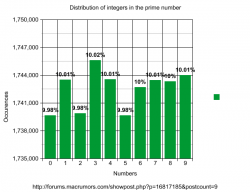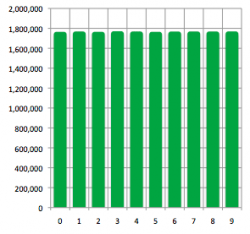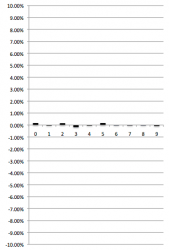GIMPS, the Great Internet Mersenne Prime Search, reports:
A text file with all of the digits of this new prime number would be over 22MB in size! But it makes wonderful bedtime reading.
I find it amusing that they say that the 47th Mersenne prime was discovered over 4 years ago. According to their own logs it was April 12, 2009, which makes it 3.79 years ago. I guess arithmetic was never their strong suit.
On January 25th, prolific GIMPS contributor Dr. Curtis Cooper discovered the 48th known Mersenne prime, 2^57,885,161 - 1, a 17,425,170 digit number.
This find shatters the previous record prime number of 12,978,189 digits, also a GIMPS prime, discovered over 4 years ago. The discovery is eligible for a $3,000 GIMPS research discovery award.
So take that, 12978189-digit Mersenne prime. Your reign is over!This find shatters the previous record prime number of 12,978,189 digits, also a GIMPS prime, discovered over 4 years ago. The discovery is eligible for a $3,000 GIMPS research discovery award.
A text file with all of the digits of this new prime number would be over 22MB in size! But it makes wonderful bedtime reading.
I find it amusing that they say that the 47th Mersenne prime was discovered over 4 years ago. According to their own logs it was April 12, 2009, which makes it 3.79 years ago. I guess arithmetic was never their strong suit.







